Wave Propagation Laboratory
For the deployment of IOWN/6G in the 2030s, we can expect the following to be demanded: widespread use of wireless communication as social infrastructure, extreme coverage that expands communication to non-terrestrial areas such as the ocean and outer space, high-speed, high-capacity, and low-latency communication without users needing to be aware of the wireless network, flexible wireless space formation that confines radio waves to designated areas, and high-quality, stable connections enabled by advanced wireless environment analysis and predictive technologies.
The Wave Propagation Laboratory is engaged in the development of fundamental technologies in the following areas to apply them to IOWN/6G in the 2030s: high-speed underwater acoustic communication for non-terrestrial networks, expansion of extreme coverage to areas unexplored for wireless communications; ultrawide-area IoT sensing platform using satellites and ocean buoys; and terabit-class wireless transmission, to achieve high-speed, high-capacity transmission as a wireless xHaul technology equivalent to optical fiber transmission.
We are also conducting research and development to realize information and communication infrastructure that provides new value, standing out from existing wireless services. These infrastructure technologies include: photonic-assisted matrix radio beamforming using new radio signal processing technologies applying photonic technologies, multishape wave control to control radio-wave trajectories in the air, prediction of wireless communication quality based on multimodal information about the wireless environment, and stabilization of wireless communication quality through the cooperation and coordination of multiple wireless terminals.
Through these technologies and R&D efforts, we are creating new value that will bring about change in society.

Below, we introduce seven key technologies currently being researched and developed by the Wave Propagation Laboratory.
- Underwater acoustic communication technology
- Ultrawide-area IoT sensing platform
- Terabit-class wireless (OAM) transmission technology
- Photonic-assisted matrix radio beamforming technology
- Multishape wave control technology
- Wireless telecommunication link quality prediction technology using multimodal information
- Stabilization of high-frequency communication quality through coordinated operation of multiple terminals
Underwater acoustic communication technology
★Video available (click here to scroll down)★
(in Japanaese)
Under the sea is a difficult environment for high-speed wireless communication, as transmission of radio waves underwater is severely limited. However, the need for wireless underwater video transmission is becoming tangible, such as for remote control of marine construction equipment and inspection of underwater facilities using unmanned submersible vehicles. In this area, we are conducting research and development oftechnologies utilizing a variety of signal processing developed for terrestrial wireless communicationsto increase the speed of acoustic communications, which are less susceptible to sea water turbidity or sunlight. Our goal is to create Mbps-class high-speed acoustic communication technology capable of transmitting high-definition video.
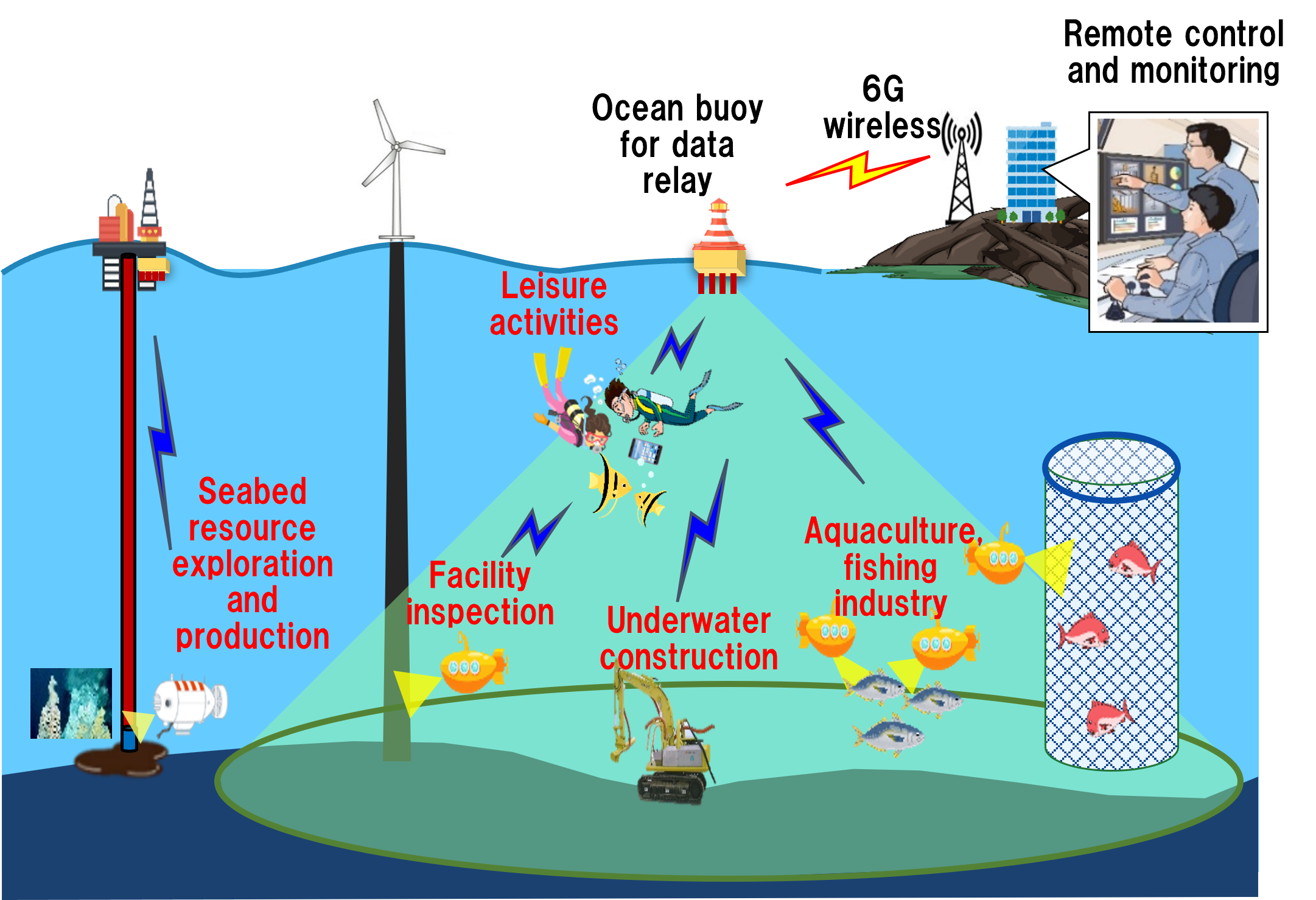
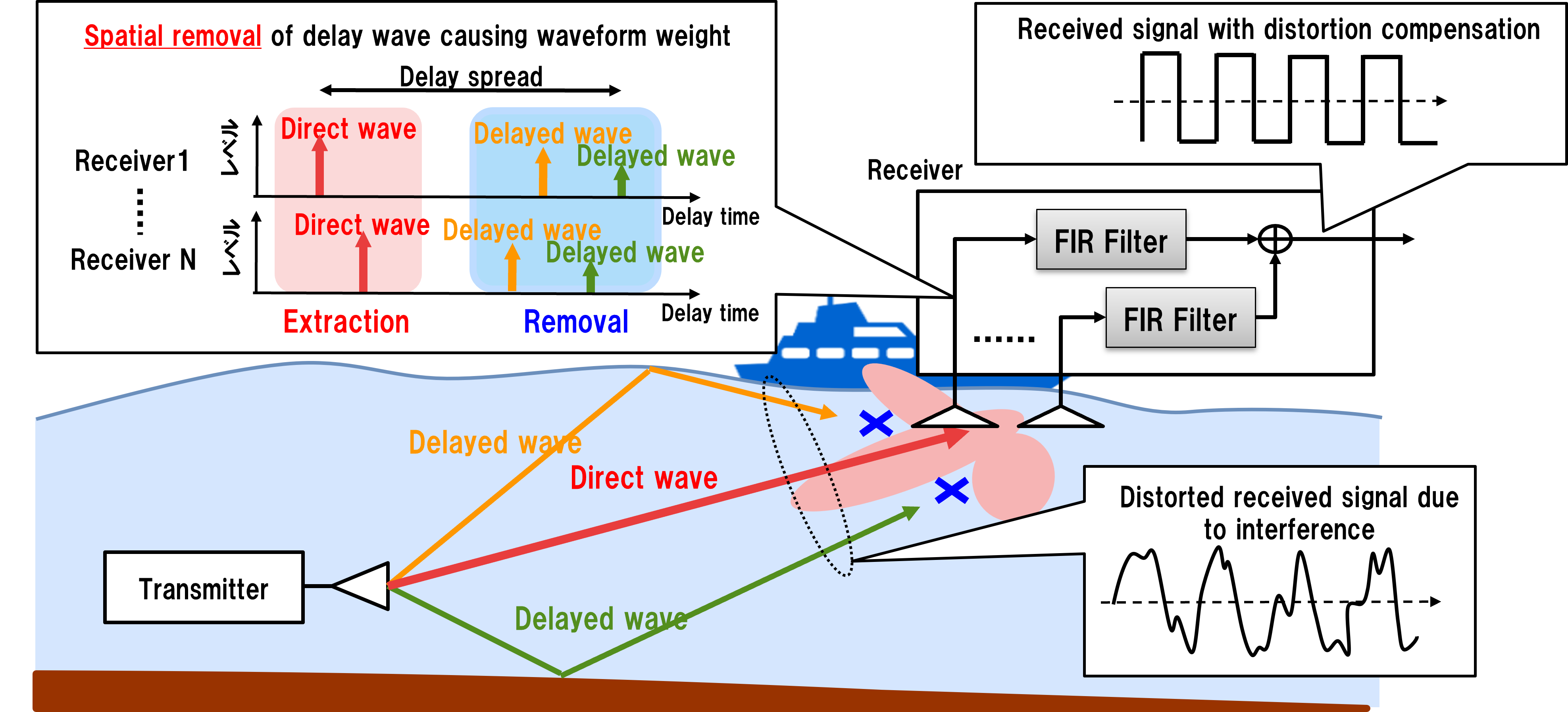

Source:https://txbiz.tv-tokyo.co.jp/you/news/post_269496 (in Japanese) (posted on Mar. 2023)
[Related Links]
■NTT Technical Review
[1]Underwater acoustic communication technology
[2]Underwater Acoustic Communication Technology for Wireless Remotely Operated Vehicles
■Press Releases
■References
Ultrawide-area IoT sensing platform
Low Power Wide Area (LPWA) featuring wide-area, low-speed communications is a promising technology for IoT-oriented radio access. We are engaged in developing technology that use LPWA to collect sensor data on a global scale from Low Earth Orbit (LEO) satellites and high-altitude base stations. Our aim is to realize ultra-wide-area, low-power sensing services in oceanic and mountainous regions lacking terrestrial communication networks. Such services include more accurate weather forecasts made possible by area-wide oceanic and marine meteorological observations using buoys and early detection of floods through river monitoring.
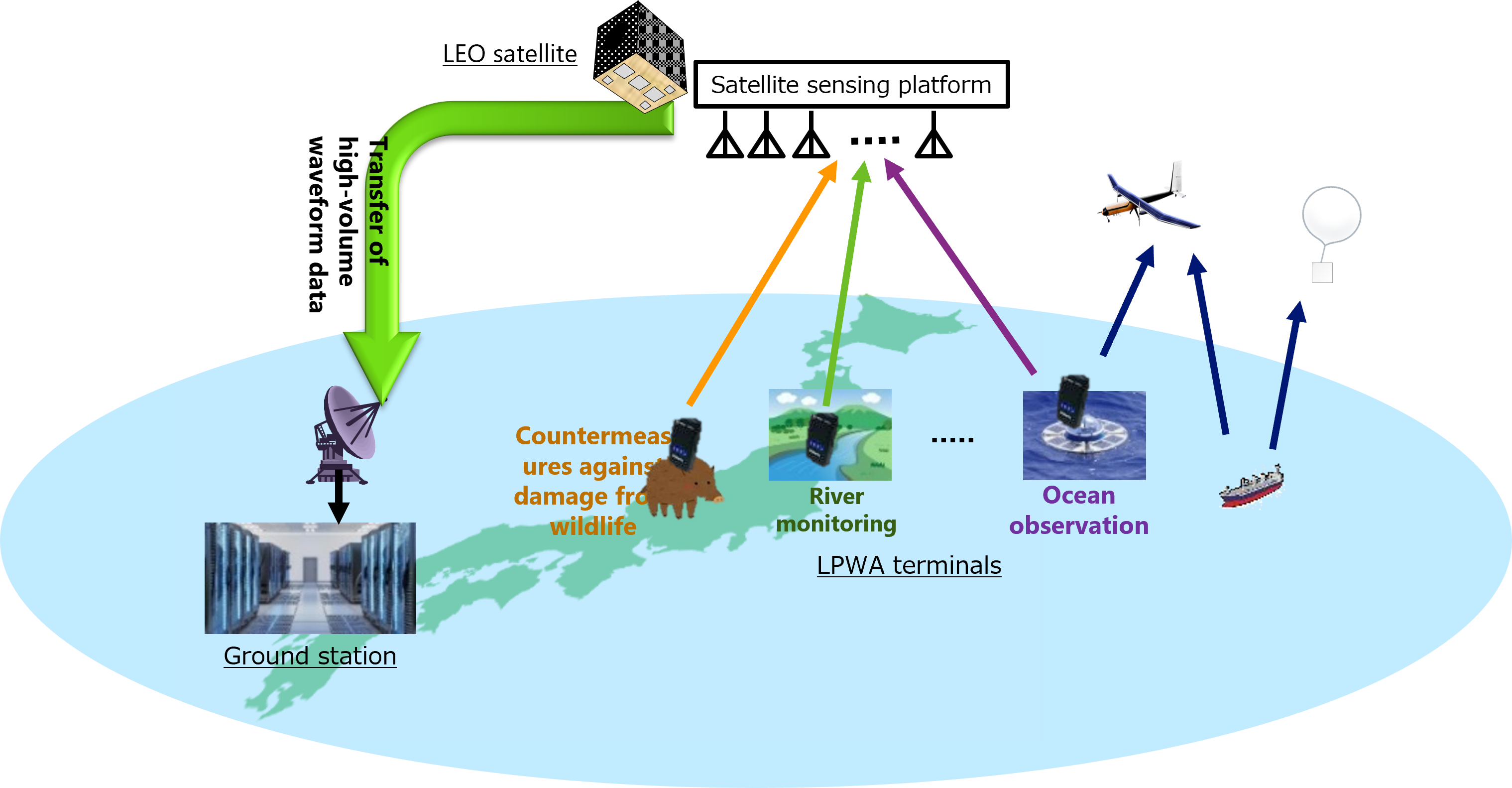
* This content was posted on Dec. 2021.
[Related Links]
■NTT Technical Review
■Press Releases
■Related web sites
Terabit-class wireless (OAM) transmission technology
To support the ultra-high-capacity network and information processing infrastructure of the IOWN and 6G and prepare for the increasing future demand for wireless communications, the Wave Propagation Laboratory seeks to achieve terabit-class wireless transmission. To increase the capacity of wireless communication, we are innovating OAM-MIMO* multiplexing transmission technology, dramatically increasing the number of spatial multiplexes. We are also developing sub-terahertz waveguide technology to expand the transmission bandwidth by using frequencies beyond 100 GHz.
※MIMO: Multiple-Input Multiple Output
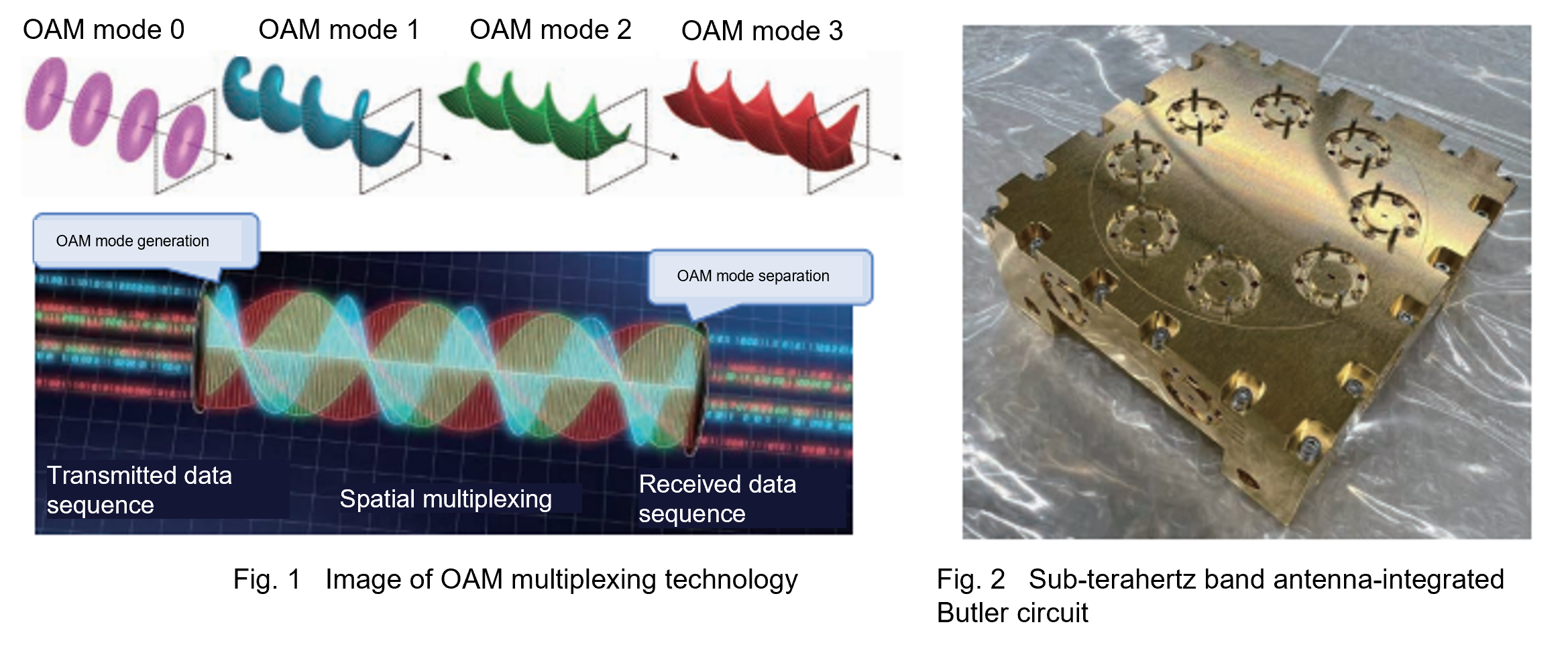
Butler回路
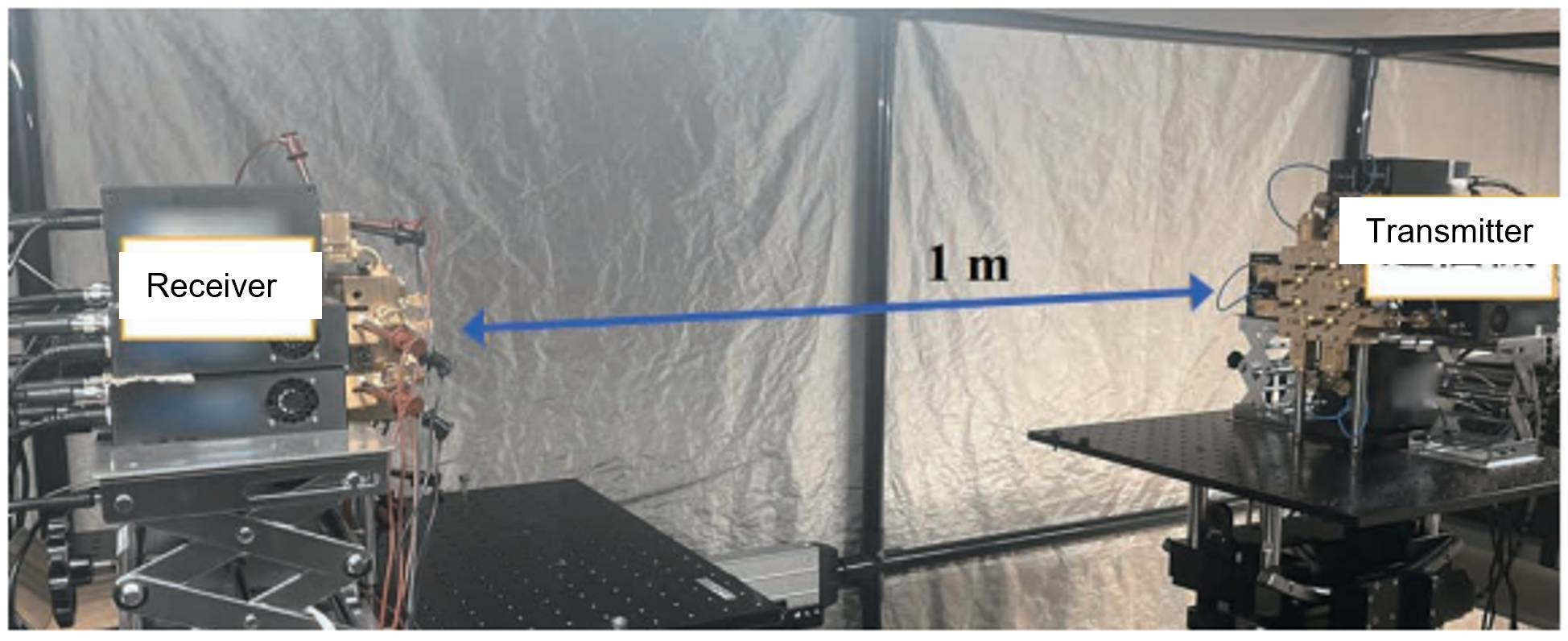
* This content was posted on June 2022.
[Related Links]
■NTT Technical Review
[1]R&D Activities of Core Wireless Technologies toward 6G Radio Access
[2]Toward Terabit-class Wireless Transmission: OAM Multiplexing Technology
■Press Releases
■References
-
[4]H. Sasaki, Y. Yagi, R. Kudo, and D. Lee:"1.58 Tbps OAM Multiplexing Wireless Transmission with Wideband Butler Matrix for Sub-THz Band," IEEE JSAC, 2024.
Photonic-assisted matrix radio beamforming technology
For 6G systems, which are expected to be deployed in the 2030s, the use of high frequency such as millimeter waves is being investigated. To compensate for extremely high-frequency band propagation loss, radio beamforming using massive antenna arrays with thousands to tens of thousands of elements is considered to be necessary. Our research efforts focus on technology that simultaneous generates multiple beams with a massive antenna array by using optical signal processing technology and processing multiple signals using WDM (wavelength-division multiplexing). We are working to increase the number of elements and beams while addressing practical issues.

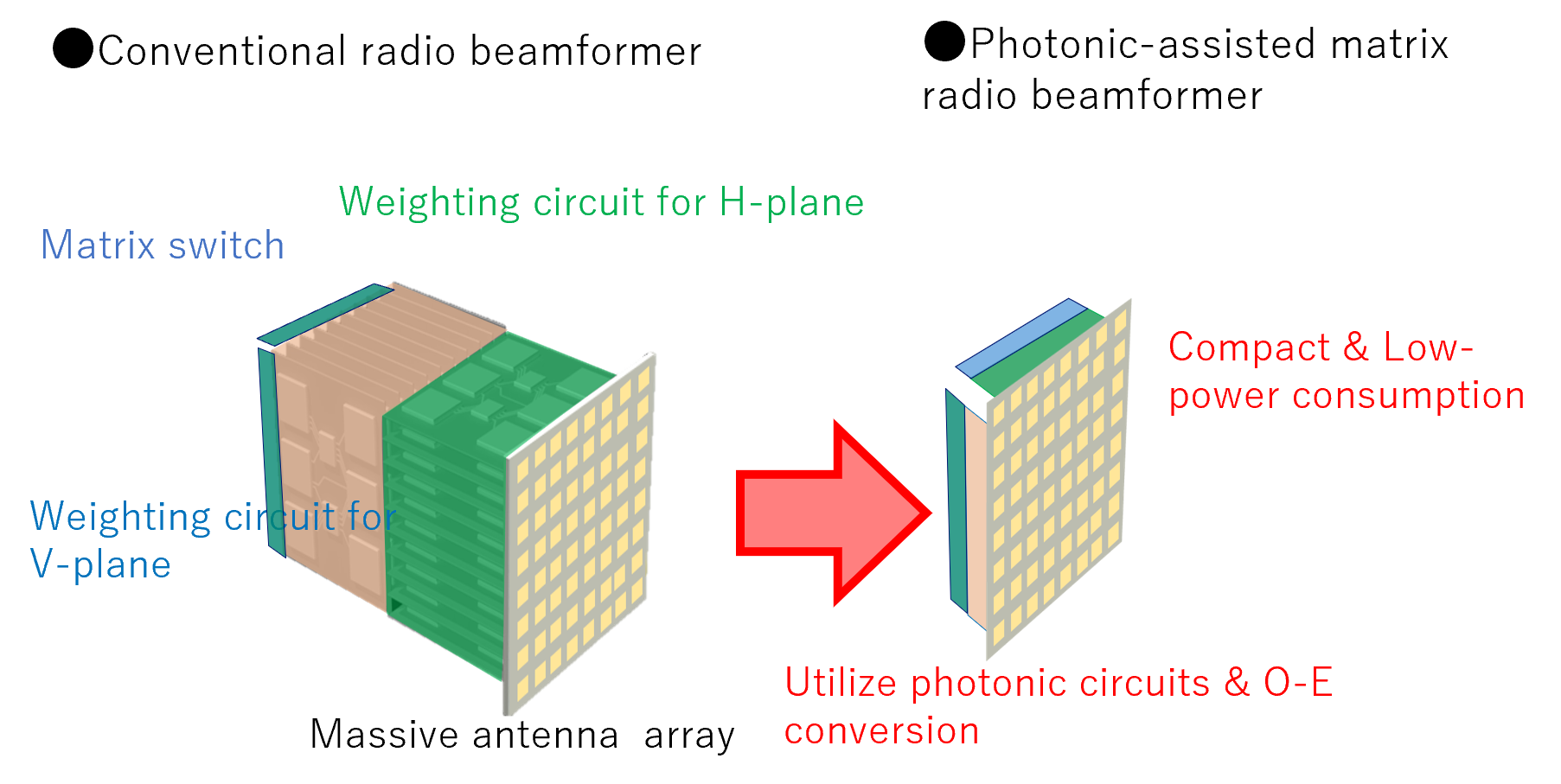
* This content was posted on Mar. 2025.
[Related Links]
■References
Multishape wave control technology
In the IOWN/6G era, it is expected that a wide variety of devices will be connected wirelessly. Interference between users is thus an issue. Applying technology developed in the field of optical communication to control radio waves based on their propagation characteristics, we seek to form flexible wireless space and achieve interference-free transmission.

* This content was posted on Nov. 2023.
[Related Links]
■Awards
Wireless communication quality prediction technology using multimodal information
The use of millimeter waves, also called extremely high frequency (EHF), holds great promise for ensuring the transmission band in Beyond 5G wireless communication. However, EHF is easily affected by physical blockings. Even a slight change in the environment can affect communication quality. We are thus developing technology to stabilize communication quality by using not only previous and current information about communication quality but also space information, such as the location and movement speed of terminals, to predict the effects of physical blockings on communication quality and using the results in a feedback loop.
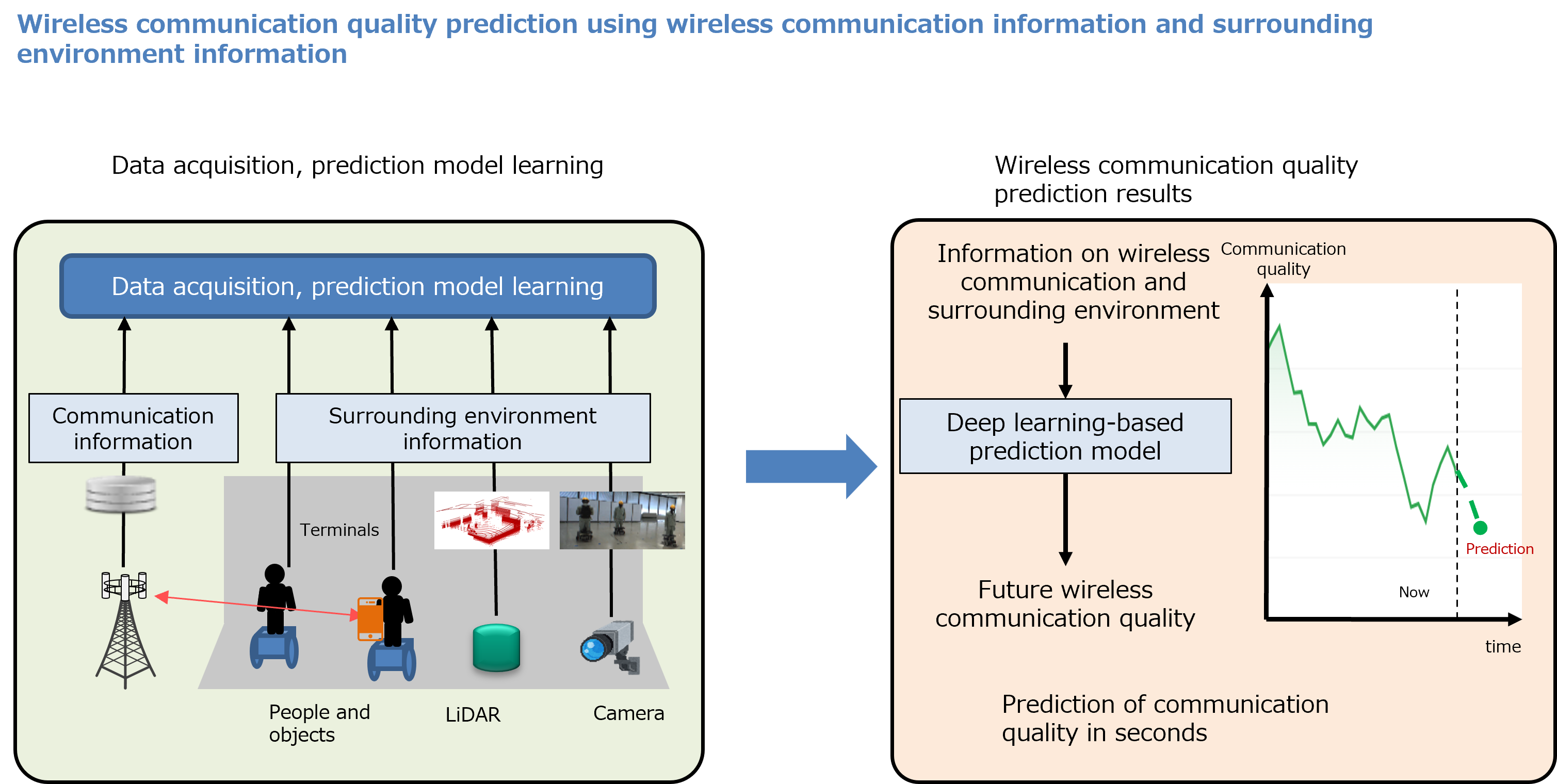
* This content was posted on Nov. 2023.
[Related Links]
■NTT Technical Review
[1]Wireless-telecommunication link-quality-prediction technology using spatial information
[2]Wireless-link-quality Prediction and Device-position Estimation Based on Relationship between Wireless-communication-link and Physical-space Information
■Awards
-
[3]電子通信情報学会 通信ソサイエティ 2022年度 チュートリアル論文賞「フィジカル空間情報を用いた深層学習に基づく無線通信品質予測」(in Japanese)
Stabilization of high-frequency communication quality through multiple user terminals cooperation
The use of higher frequency band, such as milimmeter-waves holds great promise for increasing thedata rate of Beyond 5G wireless communication. However, higher frequency is easily affected by physical blockingss. Even a slight change in the environmental can affect communication quality. We are thus conducting R&D on stabilizing higher frequency communication quality through the cooperation of multiple user terminals.
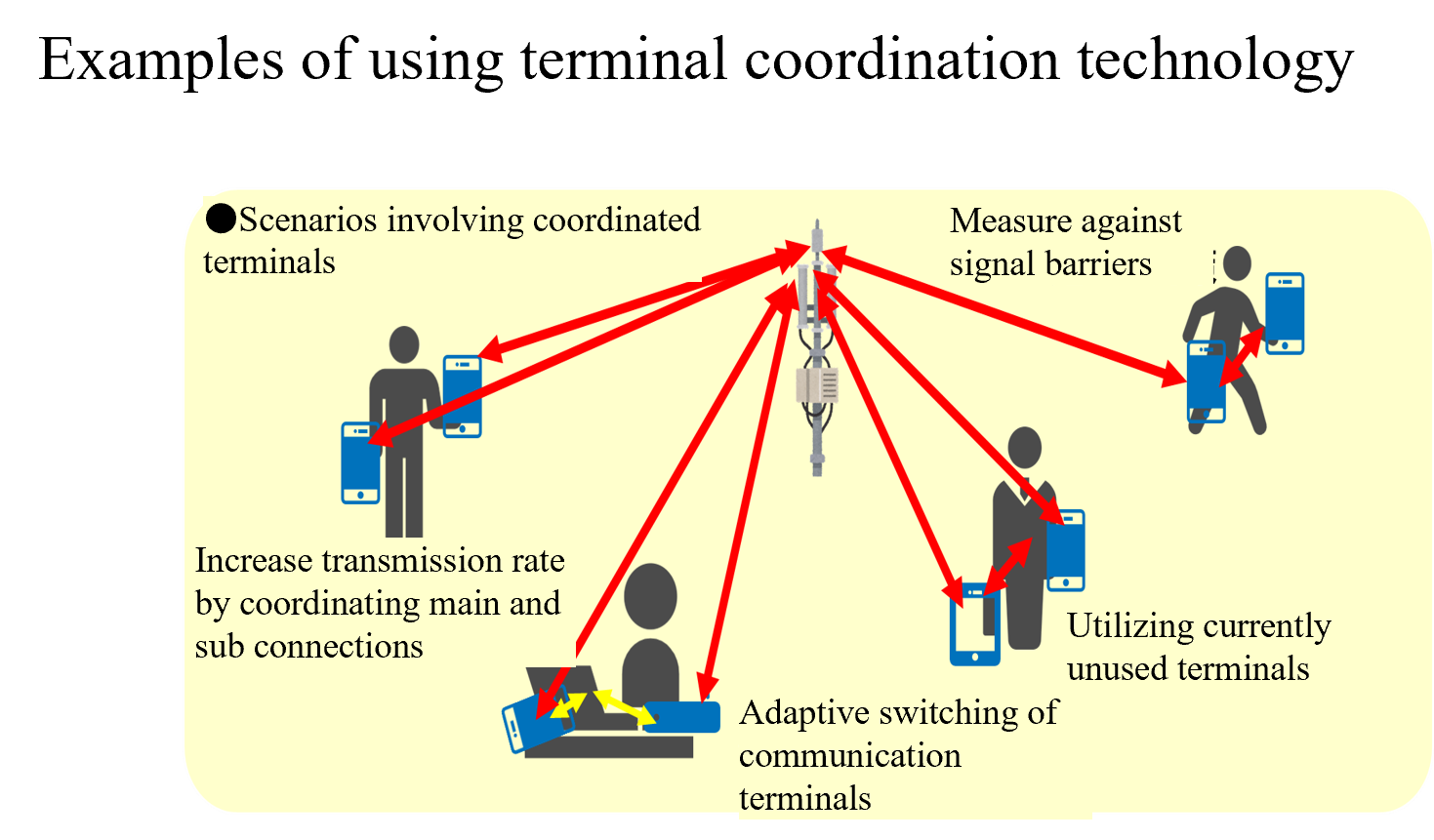

[Related Links]
■References
-
[1]T. Kageyama, et al., "Study of UE cooperation techniques using relay transmission at millimeter-wave ," 2023 IEICE Society conf. B5-55, (in Japanese)
-
[2]T. Kageyama, et.al., "Multiple UE link selection for 28GHz channel in 5G network," IEEE WCNC 2024
Research&Activity

07/26/2024
R&D Activities of C...
NTT and NTT DOCOMO are working together to implemen...
from NTT Technical Review
07/26/2024
Achieving IOWN/6G and C...
NTT Network Innovation Laboratories (NIL) is commit...
from NTT Technical Review
06/05/2024
Achieving the Word'...
With the advent of smartphones, mobile communicatio...
from NTT Technical Review
09/01/2023
Underwater Acoustic Com...
Toward the 6th-generation mobile communication syst...
from NTT Technical Review
08/05/2022
R&D Activities of C...
Technical research for the 6th-generation mobile co...
from NTT Technical Review
08/05/2022
Research and Developmen...
Research and development at NTT Network Innovation ...
from NTT Technical Review
06/16/2022
Research on Intelligent...
As we move toward the era of the Innovative Optical...
from NTT Technical Review
03/08/2022
High-efficiency Wi-Fi T...
NTT undertook the technical development and impleme...
from NTT Technical Review
12/24/2021
Wireless-telecommunicat...
This technology predicts the link quality of wirele...

12/18/2020
Underwater acoustic com...
Spatio-temporal equalization technology that compen...

08/13/2020
NTT successfully demons...
The research team working on OAM multiplexing trans...
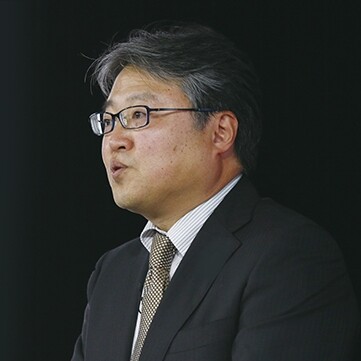
03/01/2020
Basic Technologies towa...
Tetsuomi Sogawa / Senior Vice President, Head of NT...
from NTT Technical Review
03/01/2020
Innovative Network for ...
Arata Itoh / Senior Vice President, Head of NTT Inf...
from NTT Technical Review